The Merry Beggars is busier than ever these days, thanks, in part, to Pibox. According to Founder and Executive Producer Peter Atkinson, the audio entertainment company typically has anywhere from 50-70 15-minute episodes in development at any given time—at the same time. In our interview with Atkinson and Audio Director Kevin Conroy, we learned what The Merry Beggars does, how it uses audio to create nuanced, memorable stories, and how Pibox helps them do it.
What is The Merry Beggars, and what role does audio play in what you do?
The Merry Beggars is the audio entertainment division of Relevant Radio; a Catholic radio network across the United States with over 220 stations. We're always adding new stations across the country with a potential audience of 260 million. We produce hundreds and hundreds and hundreds of episodes of audio entertainment. Think old time radio, but done with modern storytelling, sound design and acting. And we reach hundreds of thousands of families across the United States with stories like A Christmas Carol or our original series On the Night Train or our current series The Saints. — Peter Atkinson
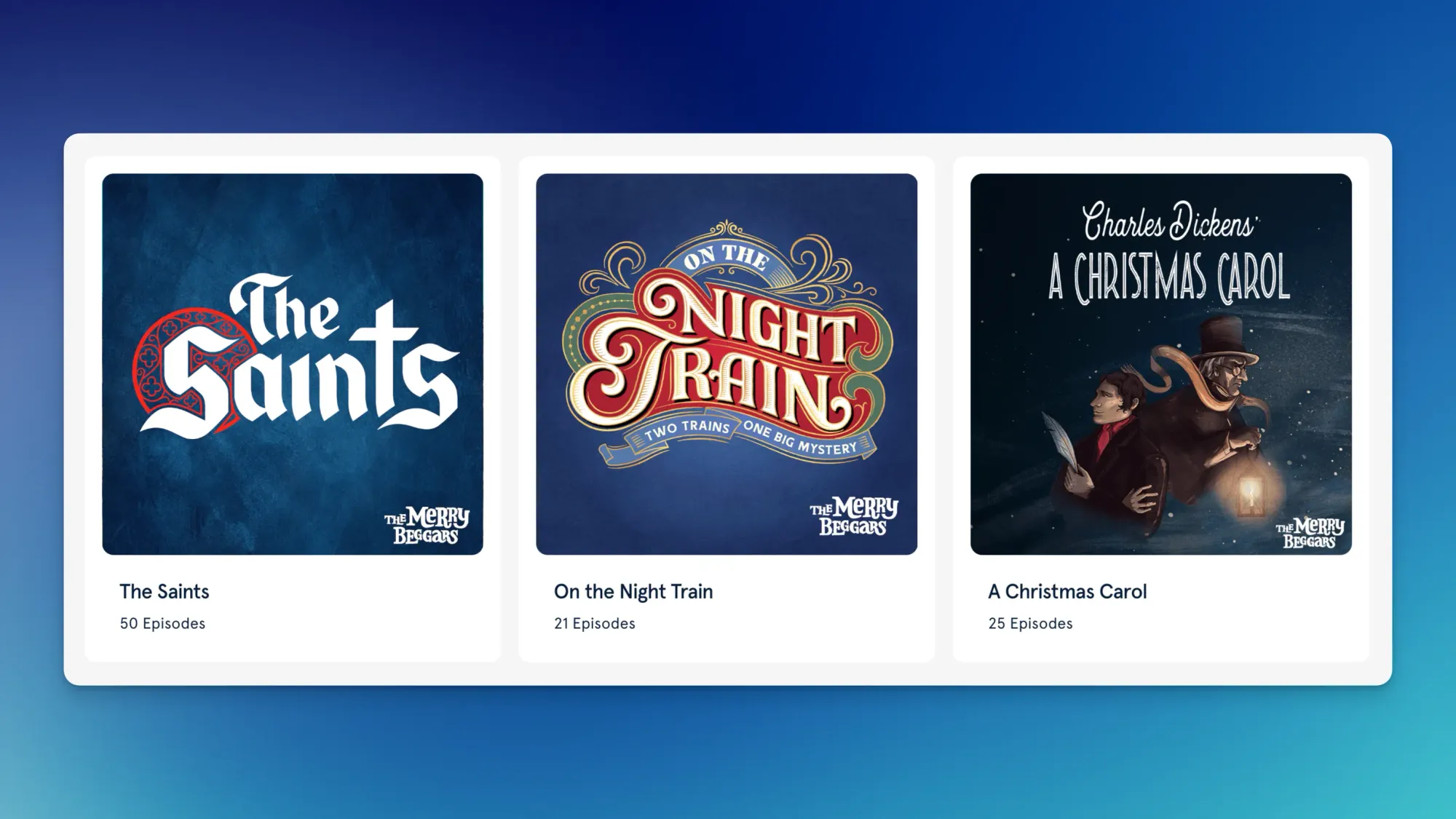
When you talk about modern storytelling, what is a typical production going to sound like that audiences can expect from you?
Our productions take over nine months to produce from beginning to end. It starts with an initial writing meeting. We have a team of about eight writers and a script development team of about four or five people. Everything from a theological consultant who's written over a thousand biographies of saints to an award-winning script consultant, Buzz McLaughlin, who just had a movie come out with Angel Studios So we start developing the story ideas, spend a couple of weeks on research, a couple of weeks sketching out the schema of the story and then months on drafting notes, revisions, so on and so forth. So that's the script development. Then we go into casting. We cast and audition over 2,000 actors a year and hire around 400 actors a year to find just the right voices to bring these stories to life. Then we bring them into the studio here in Lincolnshire, Illinois, right outside of Chicago, and we record them all in person, because when you get actors in the same room, there's just a magic of relationship and performance and storytelling that goes to the next level. And you can hear that difference in the quality in our productions.
Afterwards, we hand it to my colleague, Kevin Conroy, our Audio Director, who works with his team of sound designers, an award-winning team, and they divvy up the episodes among themselves and collaborate very effectively despite being remote. And we go through like two, or three drafts with the sound effects, we add on music scoring, and then we package it together with graphics and release it. And at any one time, we have between 50 and 70 episodes in development. So over the course of this year we'll have produced over 2000 or 3000 pages of scripts and hired hundreds of actors and sound designs—probably around 40 hours of content. I will say this—I have never been bored since I started The Merry Beggars. It has been a wild ride. — Peter Atkinson
It definitely sounds like it’s a collaborative effort. Not one person doing one thing, but a huge undertaking with a massive team.
It took me a while to learn this and Kevin Conroy was there when I was initially doing sound direction for On The Night Train. I would write 10, 20 pages of notes on giving him direction for sound design. And, it was me micromanaging and saying, well, the footsteps should go from left to right. And then, there should be a dog barking, which was just me totally not trusting the team as much as I needed to. And then Kevin Conroy had the patience to sort of work with me through that to now it's gotten to the point where I just, I hand him projects. He runs with it with his team, as long as I do a good job presenting the vision of where we want to be and what we're trying to create. We've been working long enough together that he's able to take the vision of each of the directors and just run with it. You need to invite trusted people, give them a clear vision, a clear roadmap, and then get out of their way. And Kevin Conroy has done an exemplary job of leading the sound vision, the sound design team, and just taking our work to the next level. — Peter Atkinson
From an audio production perspective, what do your episodes sound like? What am I going to encounter as a listener?
We have a naturalistic approach. It starts with picturing what the world sounds like. I have a sound vision meeting with the director who's directing the actors in the room. We meet together and go over the entire series. I wouldn't say there's one way you can expect one series to sound because we're dealing with so many worlds here. There are a lot of new environments, there's different storytelling, there are different plots. We have six assistant sound designers, two music designers, an audio reviewer, and an audio assembler. I think what the series offers is variety while maintaining great storytelling. — Kevin Conroy
In our current series called the Saints’ Adventures of Faith and Courage we feature different saints from history. And every week you'll have one from ancient Rome, then next week will be Scotland and the next ancient England. So, every time we're doing the sound design, we have sort of an overarching style, which is wanting the stories to be cinematic. We design all of it in stereo so that if you listen to it in headphones, it's like you're there in the world. But then we're really careful in asking what technology did they have in this era? Are there metal chairs? Are there wooden chairs? Do they have wagons, and would there be dogs in this geographical location? What clothing did they wear?
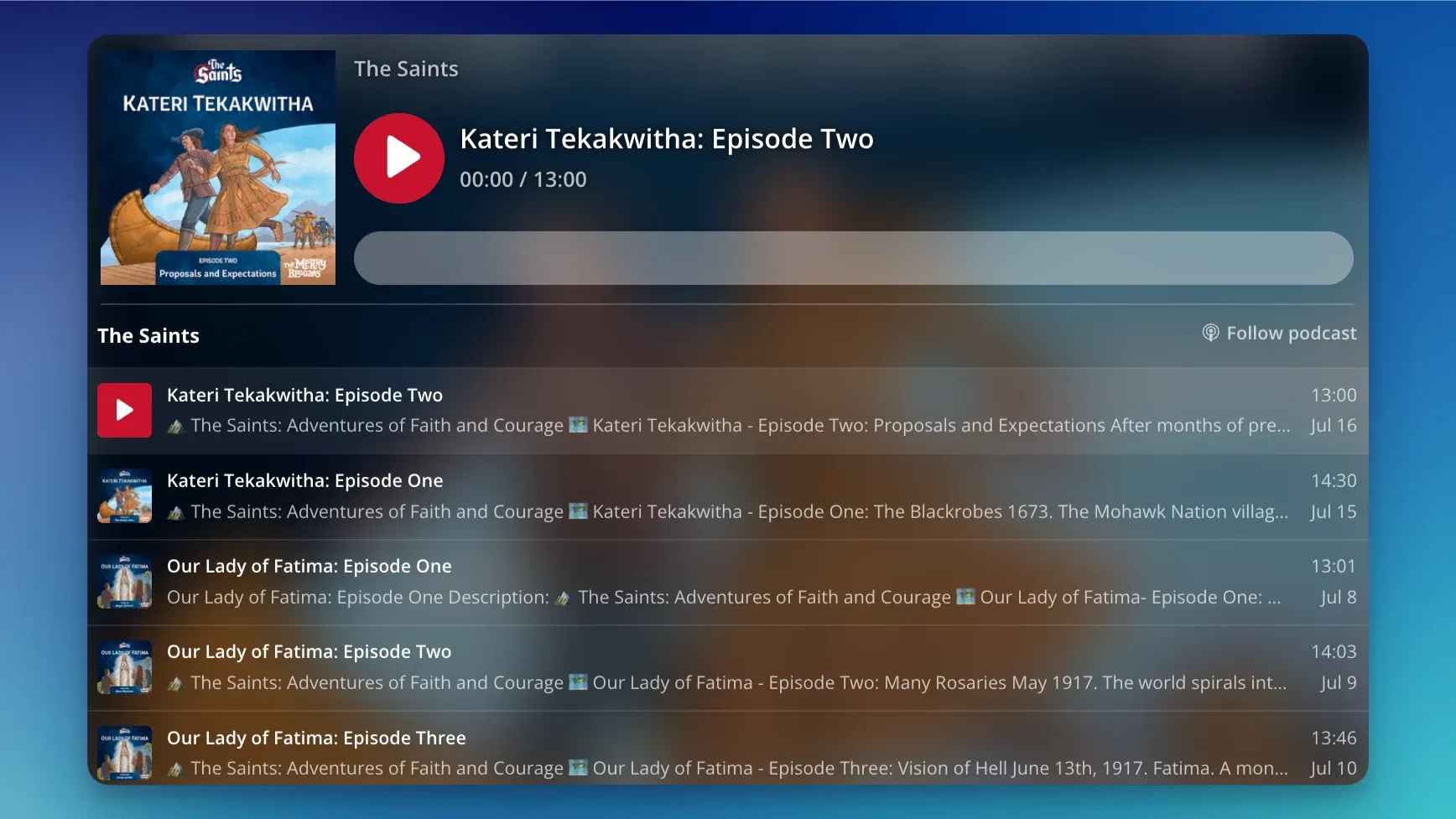
We try to get really detailed around the sound design so that it just comes to life. Because what I found is that audio is really visual, which is weird. You don't think of it that way, but if you, if you work in audio correctly, Kevin and his team are able to evoke really specific images for the audience. We'll add in things like if characters hug the sounds of fabric rubbing against each other. — Peter Atkinson
Can you talk about how you collaborate with music supervisors, actors, and other audio professionals for this process of creating your stories?
We collaborate when we're in the room and have a note taking process we use throughout the whole day where we run the scripts from start to finish. With that marking system we're able to identify and remember the takes we want to use and the takes we don't want, it's a pretty tedious job. It requires skill and attention. With our DAW [digital audio workstation], which is Adobe Audition, we narrow everything down to the best takes, and line those up so we have consistent sessions of the scripts from start to finish. At that point, I meet with the director who's in the room and we have what's called a sound vision meeting, where they will go over their vision, what they're picturing for the entire series. I'll meet with them and then we'll discuss how we can make that achievable through sound.
We generally don't even start going through it from top to bottom. We start with, OK, what are the questions you have? You've read it. I assume it makes sense to you. But what are the things that you don't know how to do, you need more clarity on, or just any general questions? So we'll go over that, at which point our sound designers have a first draft assignment. They have two weeks to complete the first draft, which is five 12-20 minute long episodes, and then Pibox comes in, which is what we use for giving and receiving notes. We then have an audio reviewer who is also tied in on the series that will listen and they'll give a first round of general notes, at which point the sound designers have one week to turn around a second draft.
Once the team starts working on the second draft, our music designers come into the process. Based on the sound vision, they compose and select about three to four generally leveled scoring options per scoring section to choose from. After one week for the second draft, it comes to me and I have two weeks to do my final pass, which includes final edits, scoring, packaging, mixing the final master, and then we hand it over to publishing and they'll ship it out. — Kevin Conroy
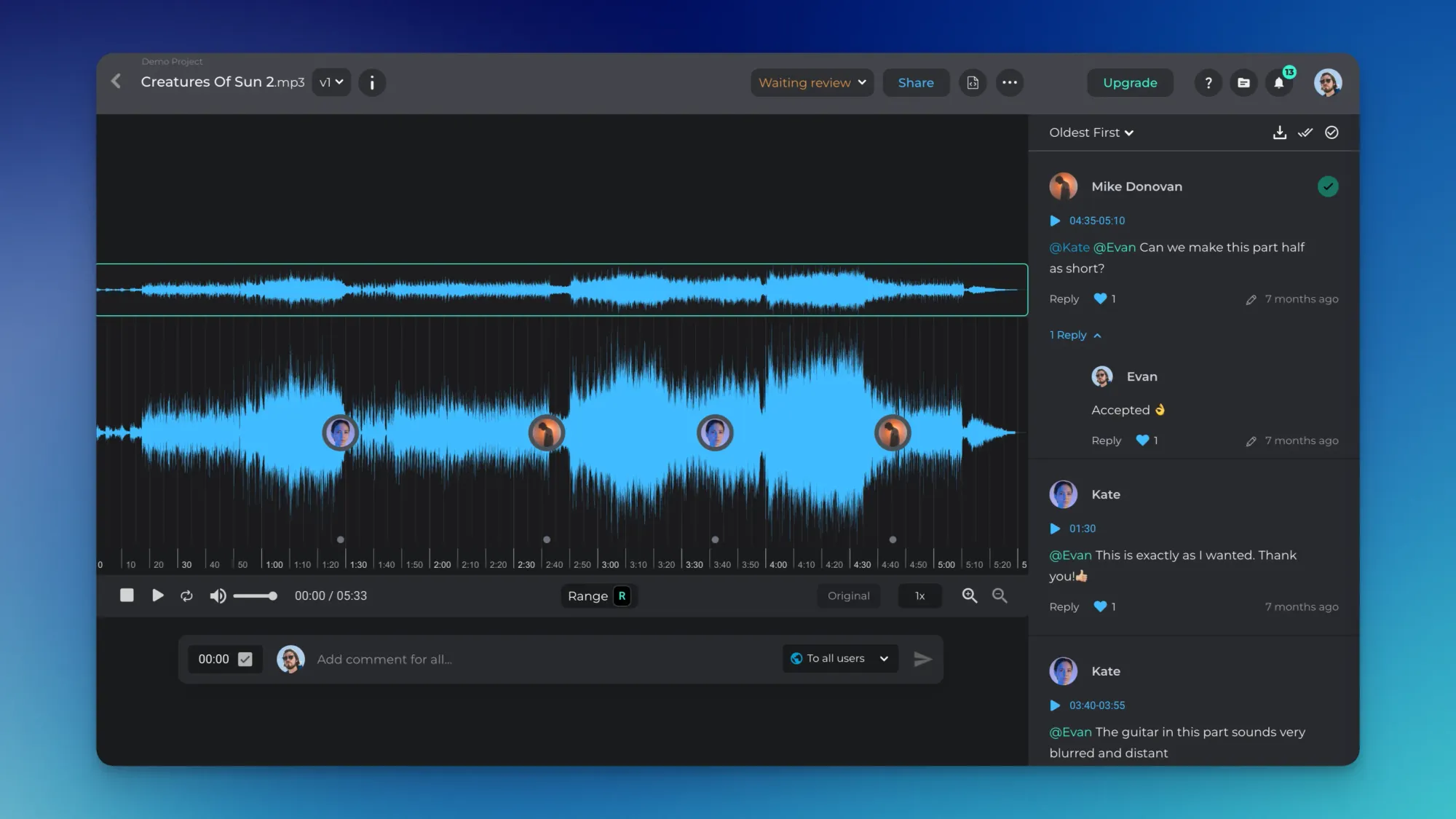
So, with Pibox, you are currently making like 20 episodes a month, is that correct?
We're releasing four of the Saints series a month, which is about 20 episodes. And it's pretty cool, even on the post-production end, we're able to have five or six different series in the post-production phase at the same time because of Pibox. — Kevin Conroy
So, we'll usually have 20 to 40 episodes in various draft phases. Every project we've done has sort of gone to the next level of scale and quality and storytelling. So A Christmas Carol was 25 five to eight-minute episodes. The Night Train was 21 40-minute episodes. And then the saints are like hundreds of 15 minute episodes every single day. One of the issues that Kevin Conroy brought up early on was saying he didn’t have the bandwidth to be able to review this amount of audio every single week. So we huddled and problem solved and we figured Kevin is reviewing all the audio, but we can hire someone to do probably the first 50 % of that audio reviewing, you'll catch the obvious mistakes. We'll give him sort of a sound design Bible, and he'll operate from that and be able to give notes. And because of Pibox, he can be located anywhere. He doesn't need to be in person and he can asynchronously give the assistant sound designers notes, and get them to their second draft so that by the time Kevin looks at them, they're already 50%-60% down the workflow and that freed us up to be able to do 10x the number of episodes. — Peter Atkinson
Yeah. — Kevin Conroy
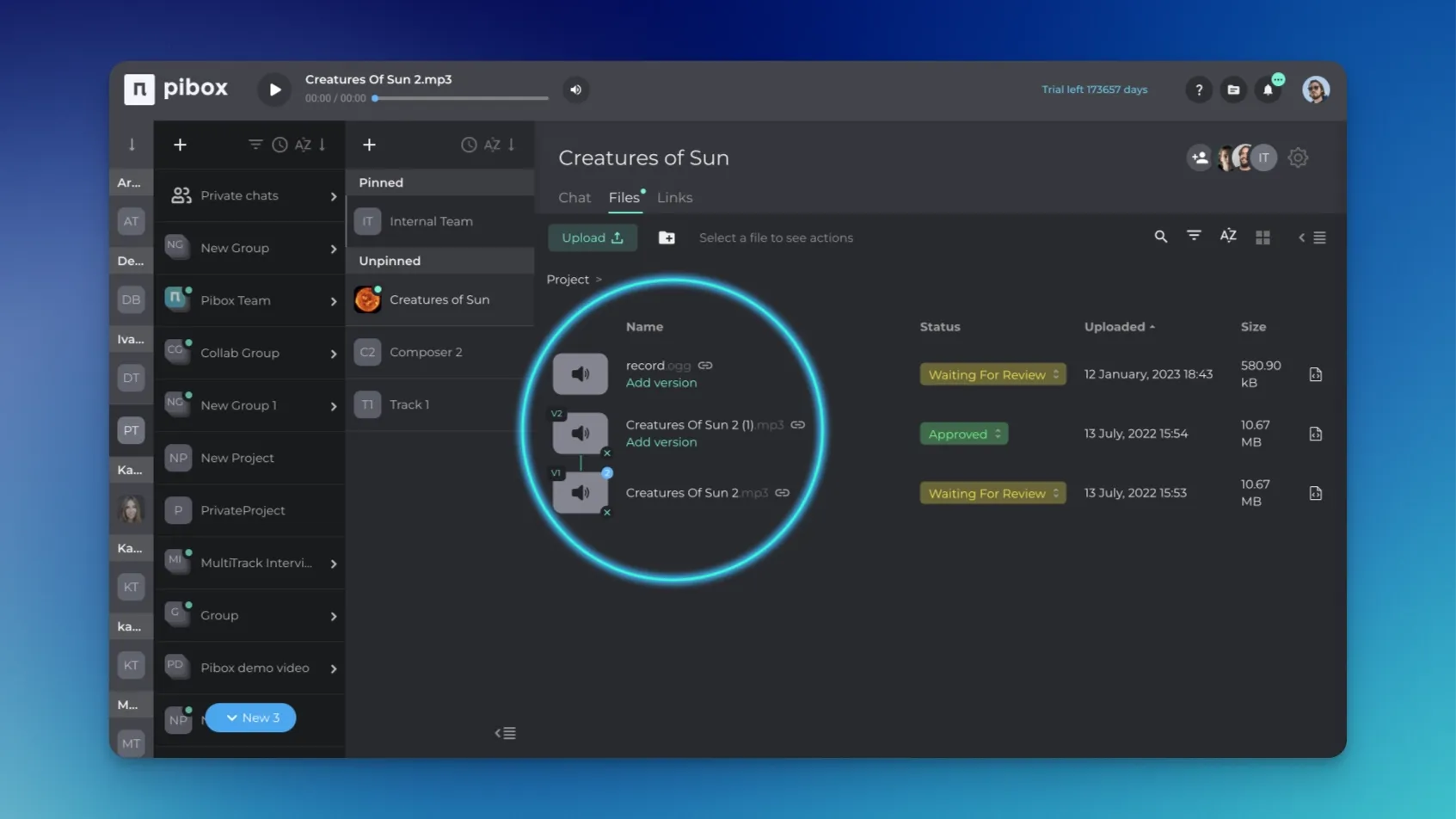
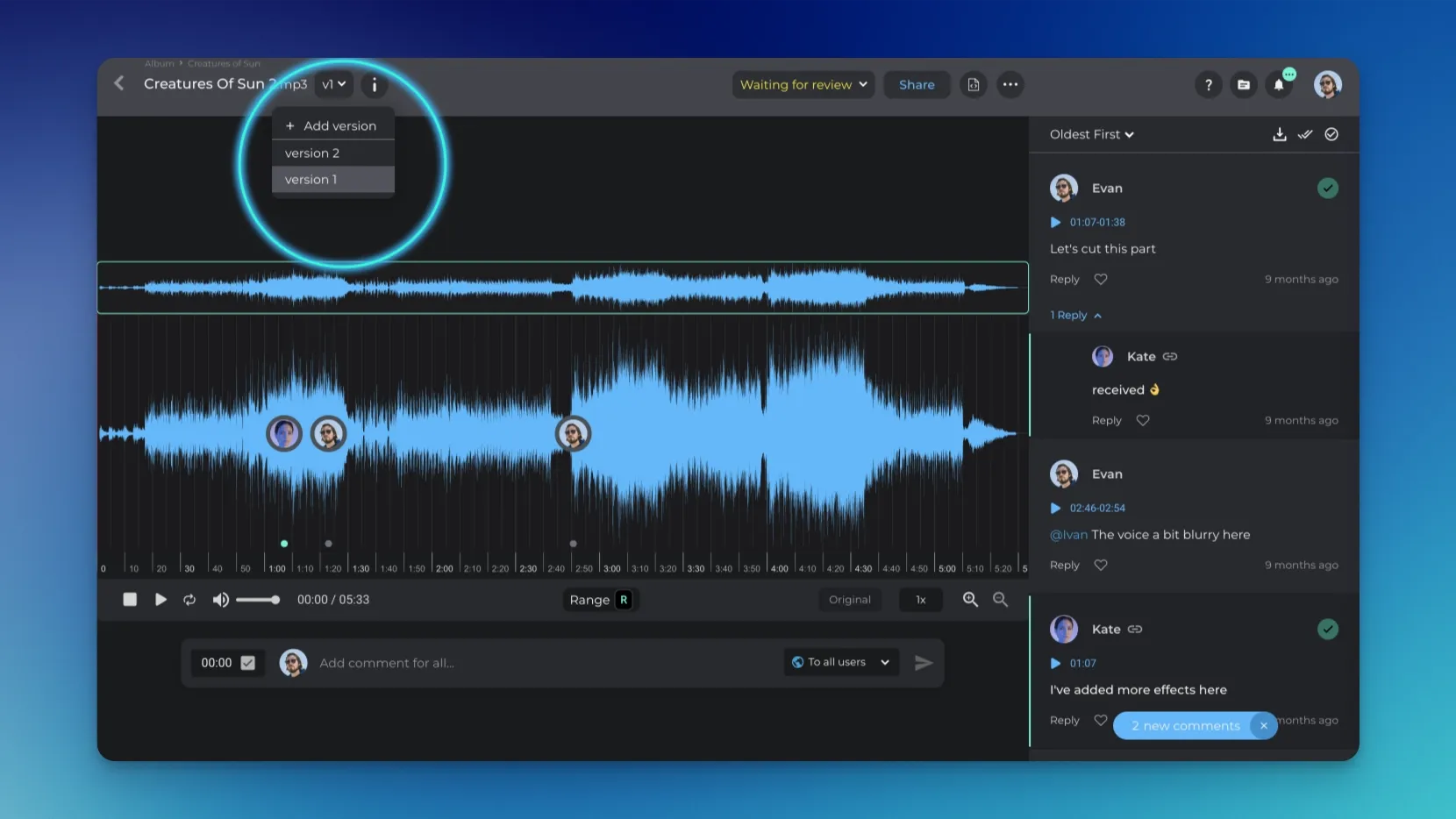
Right? Hundreds and hundreds and hundreds of notes given to a team of a dozen people spread out across the world. And we never have to deal with any file management. We never have to deal with any version management. We never have to deal with any platform management. It doesn't matter whether someone's on Linux, Mac OS, or Windows. It's just removed all of that conversation so that all of our conversations are around our craft, our art, and storytelling. It makes a lot of the frustrating administrative stuff go into the background, which is awesome. — Peter Atkinson
Were you just using Google Docs before and essentially looking at a WAV file and being like, hey, at four minutes and 13 seconds, the footsteps need to go this way and then taking that, putting the note into Google Docs. Was that pretty much the process before?
Yes. It was managing Google doc files in Google drive. Now we use ClickUp as our project management system, Pibox as our file management version management of all of our audio, and then Google drive as our repository for final versions for mixed downs, and raw audio. We know we have terabytes of data. — Peter Atkinson
If you were to kind of just give a rough guess, how much is Pibox saving you as far as time?
I think about it in two ways. So there's the way it saves time for the note-giver, and then there's the way it saves time for the person who's receiving the notes instead of looking at a document and then trying to find where the notes are referenced in the audio, it's about three times faster. But for the note-giver, it's probably about 10 times faster. I'm taking out having to type out timestamps. I just click it, highlight it. This is the section, type my note and I'm done. Whereas if I were writing that into Google Doc, I'd still be typing the timestamps correctly. — Kevin Conroy









